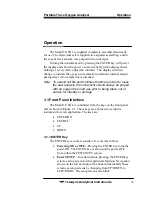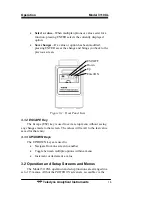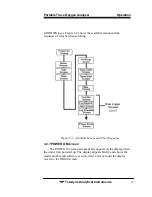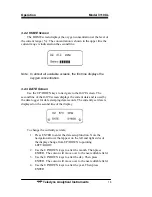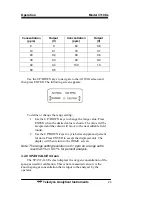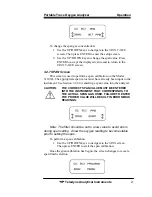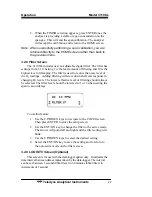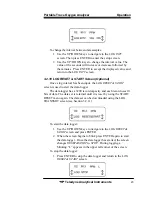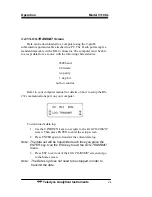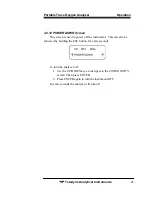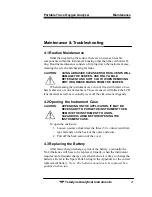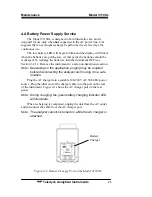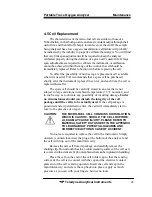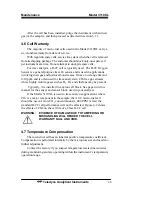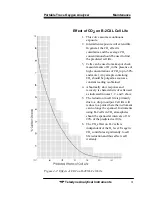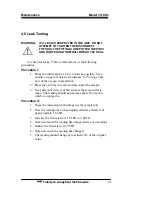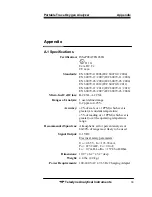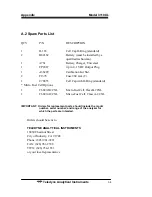
Portable Trace Oxygen Analyzer
Maintenance
Teledyne Analytical Instruments
29
4.5 Cell Replacement
The characteristics of the micro-fuel cell are similar to those of a
NiCad battery in that both provide an almost constant output through their
useful life, and then fall off sharply towards zero at the end. If the sample
being analyzed has a low oxygen concentration, cell failure will probably
be indicated by the inability to properly calibrate the analyzer. You will find
that very little span adjustment will be required to keep the analyzer
calibrated properly during the duration of a given cell’s useful life. If large
span adjustments are required to calibrate the instrument, or calibration
cannot be achieved within the range of the control, the cell should be
immediately replaced. Refer to Section 4.4 before replacing the cell.
To offset the possibility of not having a replacement cell available
when it is needed, TAI recommends that a spare cell be purchased
shortly after the instrument is placed in service, and each time the cell is
replaced thereafter.
The spare cell should be carefully stored in an area that is not
subject to large variations in ambient temperature (75 °F nominal), and
in such a way as to obviate any possibility of incurring damage.
Under
no circumstances should you disturb the integrity of the cell
package until the cell is to be actually used
. If the cell package is
punctured and air permitted to enter, the cell will immediately start to
react to the presence of oxygen.
CAUTION:
THE MICRO-FUEL CELL CONTAINS KOH SOLUTION,
WHICH IS CAUSTIC. SHOULD THE CELL RUPTURE,
A LEAK MAY CAUSE INJURY. PLEASE REFER TO
MATERIAL SAFETY DATA SHEET IN THE APPENDIX
TO LEARN ABOUT POTENTIAL HAZARDS AND
CORRECTIVE ACTION IN CASE OF ACCIDENT.
No tools are required to replace the cell in the instrument. Simply
unscrew (counterclockwise) the plug at the bottom of the analyzer and
the cell will drop out of the manifold cavity.
Remove the new cell from its package, and carefully remove the
shorting clip. Do not touch the silver-colored sensing surface of the cell, as it
is covered with a delicate Teflon membrane that can be ruptured in handling.
Place the cell on the end of the cell holder cap so that the sensing
surface of the cell is in contact with the cap and the electrical contact
plate end of the cell is facing upwards. Insert the cell and cap in the
manifold cavity, and screw the cap back into place. Apply as much
pressure as you can with your fingers, but use no tools.

